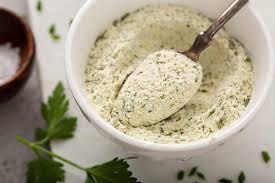Ramen Noodle Recipe: If you’re looking for the ultimate comfort food that’s savory, slurpy, and soul-warming, nothing beats a steaming bowl of ramen noodles. While it’s easy to grab a packet of instant noodles, making authentic ramen at home is a game changer.
Whether you’re craving a rich tonkotsu broth, a light shoyu style, or a spicy miso twist, this detailed step-by-step guide will walk you through everything you need to create a restaurant-quality bowl right in your own kitchen.
Why Make Ramen at Home?
Let’s face it—instant ramen is convenient, but once you taste real homemade ramen, there’s no turning back. Making ramen at home gives you total control over ingredients, flavor profiles, and dietary needs. Want it extra spicy? Done. Need a gluten-free noodle? No problem. Prefer a vegetarian version? Easy peasy.
Another reason to go homemade is quality. You can use fresh veggies, organic proteins, and homemade broth that’s packed with depth, unlike the powdered soup base in packaged versions. Plus, it’s surprisingly therapeutic—something about simmering broth and layering textures turns ramen-making into a meditative culinary experience.
And let’s not forget: it’s cost-effective. A single bowl of ramen at a restaurant could cost $15 or more, while homemade ramen can be whipped up for a fraction of the price—especially if you’re cooking for a group.
A Quick Look at Ramen’s Origins
Ramen, as we know it today, originated in Japan, but its roots trace back to Chinese noodle soups. Over the decades, ramen evolved into a national icon in Japan, with regional variations like Sapporo’s miso ramen, Hakata’s creamy tonkotsu, and Tokyo’s classic shoyu broth.
Each region has its twist—some focus on fatty pork-based broths, others celebrate clarity and umami from soy sauce or salt-based broths. What ties them all together is the harmony between broth, noodles, and toppings. The diversity of ramen makes it the perfect dish to experiment with at home.
Ingredients You’ll Need
Essential Ingredients for the Broth
Broth is the soul of ramen. A great broth balances savory (umami), salty, and a hint of sweetness.
Here are the base components:
- Chicken bones or pork bones (for tonkotsu)
- Vegetable scraps (onion, garlic, carrots)
- Kombu (dried kelp) – Adds umami
- Bonito flakes – For a smoky depth
- Soy sauce, miso, or salt – Flavoring bases depending on the type of ramen
- Mirin or sake – Adds a mild sweetness and depth
- Ginger and garlic – Essential aromatics
For beginners, a simple chicken broth simmered with garlic, soy sauce, and a bit of miso can go a long way. Simmer it low and slow to extract maximum flavor.
Noodles – Types and Best Options
Ramen noodles aren’t your average pasta—they’re chewy, springy, and hold broth like a champ.
- Fresh Ramen Noodles: Best choice if available.
- Dried Ramen Noodles: Convenient and shelf-stable.
- Instant Noodles (without flavor packet): A last resort, but still usable.
- Homemade Noodles: If you’re feeling adventurous, mix all-purpose flour, kansui (alkaline water), and eggs.
Avoid Italian pasta like spaghetti—it doesn’t have the right bounce. Your noodle choice can change the entire feel of the dish, so aim for something authentic.
Protein Choices – Chicken, Pork, or Tofu
Ramen is incredibly versatile when it comes to protein.
- Chashu Pork: Braised pork belly in soy sauce and mirin.
- Grilled Chicken: Marinated and seared or oven-roasted.
- Soft-Boiled Eggs (Ajitama): Marinated in soy, mirin, and sake.
- Tofu or Tempeh: Ideal for vegetarian or vegan ramen.
Marinate your proteins for added flavor. A simple soy-mirin glaze can elevate tofu or chicken from bland to brilliant.
Vegetables and Garnishes for Flavor & Texture
What’s ramen without the crunchy, colorful toppings?
- Scallions: Thinly sliced
- Nori (seaweed): Adds a briny punch
- Corn kernels: Sweetness and texture
- Bamboo shoots (Menma): Fermented and savory
- Bean sprouts: Crunchy contrast
- Spinach or bok choy: Light and healthy greens
These aren’t just for looks—they provide balance. For example, the richness of pork broth is cut perfectly by the freshness of scallions or the crispness of bean sprouts.
Pantry Staples You Shouldn’t Skip
- Soy Sauce: Adds saltiness and umami
- Miso Paste: Deep, fermented flavor
- Mirin: Slightly sweet rice wine
- Rice Vinegar: Brightness and tang
- Sake: Depth of flavor
- Sesame Oil: Nutty aroma
- Chili Oil: For heat lovers
These staples unlock complex flavors. Stocking these ensures you’re always just a few steps away from ramen heaven.
Kitchen Tools and Equipment
Tools That Make Ramen Easy to Cook
Cooking ramen doesn’t require a commercial kitchen setup, but having the right tools on hand makes the process smoother and more efficient. If you’re planning to make ramen often, investing in a few key items will pay off big time in both flavor and ease.
Here’s a basic toolkit to get you started:
- Large Stock Pot: A must-have for simmering broth. Bigger is better—you want enough room for bones, veggies, and long simmering without spillage.
- Strainer or Fine-Mesh Sieve: Helps remove bones, herbs, and veggie bits from the broth for a clean finish.
- Mixing Bowls: Use these for prepping toppings, marinating proteins, and soaking eggs.
- Chef’s Knife: A sharp knife is essential for slicing scallions, cutting pork belly, and dicing vegetables.
- Cutting Board: Preferably non-slip and large enough for multiple ingredients.
- Ladle: For serving the hot broth without mess.
- Measuring Spoons and Cups: Precision is key when it comes to flavoring the broth.
Having these tools at arm’s length not only improves your workflow but also ensures each component of your ramen—from the broth to the garnishes—gets the attention it deserves.
Optional Tools for a More Authentic Experience
Want to elevate your ramen-making ritual? These tools aren’t mandatory but bring the experience closer to that of a traditional Japanese ramen-ya (ramen shop):
- Ramen Bowls: Deep bowls that hold both broth and toppings without spilling over.
- Ramen Soup Spoons (Chirirenge): Designed for sipping broth and scooping up noodles with ease.
- Noodle Strainer Basket: Especially helpful if you’re cooking multiple batches of noodles for a group.
- Blow Torch: Great for searing chashu pork or adding char to veggies.
- Donabe Pot (Japanese Clay Pot): For cooking and serving hot ramen in an authentic, rustic style.
While not essential, these additions enhance not just your cooking but also the presentation and eating experience. After all, ramen is as much about the ritual as it is about the recipe.
Step-by-Step Guide to Cooking Ramen
Step 1: Preparing the Broth
In a pot, heat sesame oil, then sauté minced garlic and grated ginger until fragrant. Add chicken or vegetable broth, soy sauce, and a touch of miso or chili paste for flavor. Simmer for 10–15 minutes to let the flavors blend beautifully.
Step 2: Cooking the Noodles
Boil ramen noodles in a separate pot for about 3–4 minutes until tender. Drain and rinse briefly to prevent sticking.
Step 3: Prepping Toppings (Protein, Eggs, and Veggies)
Prepare your choice of protein — grilled chicken, beef, or tofu. Boil eggs for 6 minutes for a soft yolk. Lightly sauté veggies like mushrooms, corn, or spinach.
Step 4: Assembling the Bowl
Place noodles in a bowl, ladle in hot broth, and arrange toppings neatly over the surface.
Step 5: Final Garnishes and Presentation Tips
Add chopped green onions, sesame seeds, and nori strips. Serve steaming hot — a perfect balance of flavor, texture, and warmth in every spoonful.
Pro Tips to Elevate Your Ramen Game
Flavor Hacks and Add-ons
Want to turn your ramen from good to mind-blowing? These little tweaks make a massive difference:
- Infuse the broth with aromatics like garlic oil, charred scallions, or star anise during the simmering process.
- Use flavored oils like sesame, garlic, or chili oil to drizzle before serving.
- Make a tare: This is a concentrated flavor base (soy-mirin mix, miso blend, etc.) added before ladling in the broth. It layers complexity into each spoonful.
- Add umami bombs: Try dried shiitake powder, fish sauce, white miso, or anchovy paste.
- Layer textures: A crunchy topping like fried shallots or toasted sesame seeds adds that extra mouthfeel.
These hacks are how top ramen chefs fine-tune their bowls. Don’t be afraid to experiment—you’ll find your own signature style.
Mistakes to Avoid When Making Ramen
Even the best intentions can lead to ramen disasters. Here are common mistakes to dodge:
- Overcooking the noodles: They should be firm to the bite. Mushy noodles ruin the texture.
- Boiling noodles in the broth: Always cook separately to avoid starch clouding the broth.
- Not seasoning your broth enough: Broth should be bold—taste and adjust often.
- Skimping on toppings: A plain bowl of noodles and broth lacks excitement.
- Using too many toppings: This can lead to a confused, cluttered bowl.
Think of ramen like jazz—balance, improvisation, and restraint make all the difference. Avoid these slip-ups and your bowl will shine.
Variations of Ramen You Can Try
Vegan Ramen
Yes, ramen can be plant-based and still deeply satisfying.
How to Do It:
- Broth: Use kombu, shiitake mushrooms, onion, miso, and garlic simmered for a few hours.
- Protein: Pan-fried tofu, tempeh, or seitan.
- Toppings: Corn, spinach, mushrooms, chili oil, and sesame seeds.
- Noodles: Look for egg-free ramen or use soba.
Add a splash of soy milk or coconut milk for creaminess. Vegan ramen is not only healthy but often faster to make.
Spicy Miso Ramen
For heat lovers, spicy miso ramen is the holy grail.
Ingredients:
- Red miso paste
- Chili paste (like Gochujang or Sriracha)
- Sesame oil
- Garlic and ginger
Assembly:
- Stir miso and chili into the broth.
- Add garlic oil for depth.
- Top with chili-marinated eggs, grilled mushrooms, and bok choy.
Spicy miso ramen delivers a bold, fiery, umami-rich punch. Adjust heat levels to your liking—you’re in control.
Shoyu vs Tonkotsu vs Shio Broths
Shoyu (Soy Sauce):
- Clear, brown broth
- Made with chicken, kombu, and soy sauce
- Light yet flavorful
Tonkotsu (Pork Bone):
- Thick, creamy, white broth
- Requires long boiling of pork bones (up to 12 hours)
- Rich and hearty
Shio (Salt):
- Pale and light broth
- Simple seasoning with sea salt
- Ideal for highlighting delicate toppings like seafood
Each broth has its own character. Experiment to find the one that suits your mood—or make all three!
Storing and Reheating Leftovers
Homemade ramen is best enjoyed fresh, but with the right technique, you can store and reheat it without sacrificing too much of its flavor or texture.
How to Store Leftovers Properly
The key to preserving ramen is storing its components separately:
- Broth: Pour into airtight containers and refrigerate for up to 5 days or freeze for up to 3 months.
- Noodles: Drain well and toss with a little oil to prevent sticking. Store in a separate container for up to 2 days.
- Toppings: Keep proteins, veggies, and garnishes in small containers. Avoid freezing fresh toppings like scallions or soft-boiled eggs—they don’t reheat well.
Storing everything separately keeps the noodles from getting soggy and helps preserve the integrity of your garnishes.
Reheating Tips
- Broth: Reheat on the stove until it simmers. Microwave if you’re in a rush, but stove-top is ideal.
- Noodles: Briefly dip in hot water to warm them up—don’t boil or they’ll get mushy.
- Protein: Pan-sear for a minute or microwave lightly, depending on the protein type.
- Assemble: Rebuild your bowl just like before. It might not be day-one perfect, but it’ll still hit the spot.
If you freeze your broth, thaw overnight in the fridge or under running warm water. Always check for freshness before consuming reheated ramen.
Healthier Ramen Alternatives
Craving ramen but trying to eat cleaner? You can absolutely enjoy a hearty bowl without the guilt.
Low-Sodium Options
- DIY Broth: Skip the store-bought stocks—make your own to control the salt.
- Light soy sauce or low-sodium tamari: Same umami with less sodium.
- Skip MSG and bouillon cubes: They’re loaded with salt. Use natural flavor boosters like mushrooms and kombu.
- More veggies, less salt: Boost flavor through onions, garlic, leeks, and roasted carrots.
Gluten-Free Noodle Substitutes
If gluten is an issue, ramen can still be on the menu.
- Rice noodles: Neutral flavor, gluten-free, widely available.
- Soba noodles: Made from buckwheat (check labels—some contain wheat).
- Zoodles (Zucchini noodles): For a low-carb, fresh twist.
- Glass noodles: Slippery and satisfying.
Pair these with gluten-free tamari and miso, and you’ve got a wholesome, allergy-friendly bowl of comfort.
FAQs about Ramen Noodle Recipe
1. What’s the difference between ramen noodles and instant noodles?
Ramen noodles are fresh or dried wheat noodles typically made with kansui, giving them their chew and yellow color. Instant noodles are pre-cooked, dehydrated, and often come with high-sodium seasoning packets. Fresh ramen offers superior texture and flavor compared to its instant cousin.
2. Can I use store-bought broth for ramen?
Yes, but choose low-sodium chicken or vegetable broth as your base. Enhance it with soy sauce, miso, ginger, garlic, and kombu to make it more authentic. Homemade broth will always taste better, but a well-dressed store-bought broth can still hit the spot.
3. How long does it take to make ramen from scratch?
It depends. A quick miso ramen might take 30–45 minutes. But a rich tonkotsu broth could take 8–12 hours. You can save time by preparing components in advance—store broth in the freezer and toppings in the fridge.
4. Can ramen be frozen?
Absolutely. The broth freezes beautifully and can be stored for up to 3 months. Freeze in portion sizes for quick weeknight dinners. Noodles don’t freeze well due to texture loss, so always cook fresh when possible. Toppings like chashu can be frozen too.
5. What are the best toppings for homemade ramen?
Popular choices include:
- Soft-boiled eggs (ajitama)
- Chashu pork
- Corn kernels
- Scallions
- Nori
- Mushrooms
- Chili oil
You can get creative with kimchi, fried garlic, spinach, or even crispy bacon. The key is balancing textures and flavors for every bite.
Conclusion
There’s something magical about a bowl of ramen. It’s more than just a meal—it’s an experience. From slow-simmered broths to chewy noodles, and perfectly placed toppings, ramen is a symphony of textures and flavors. And now, with this step-by-step guide, you’ve got everything you need to recreate that magic in your own kitchen.
Don’t be intimidated by the process—yes, it takes time and effort, but it’s also flexible, fun, and incredibly rewarding. Whether you’re craving classic tonkotsu, a bold miso broth, or a clean and simple shoyu, the beauty of ramen is that it’s whatever you make it.
So roll up your sleeves, grab your chopsticks, and get ready to slurp your way to comfort. Once you’ve tasted your own homemade ramen, there’s no going back to the instant stuff.



